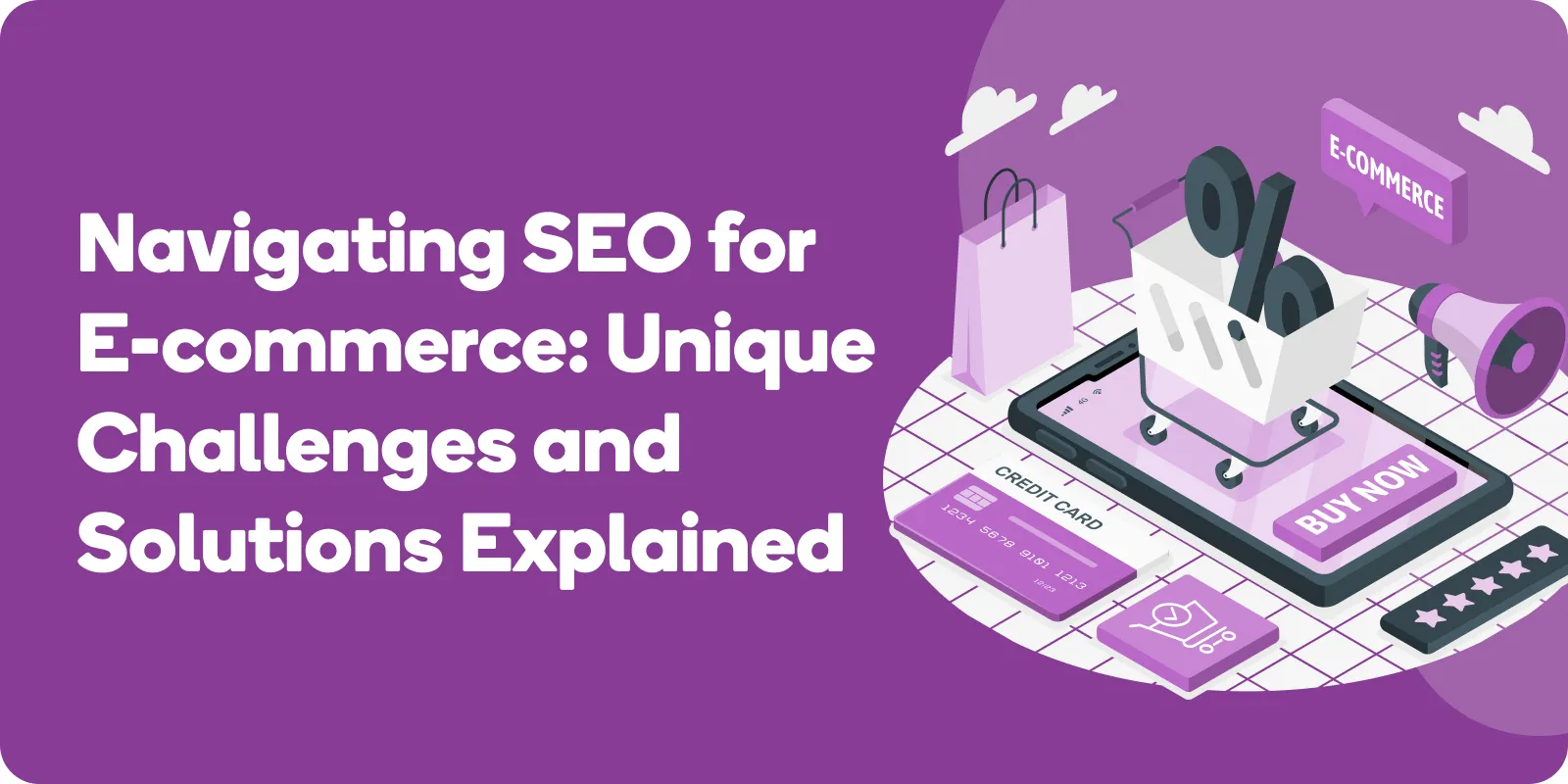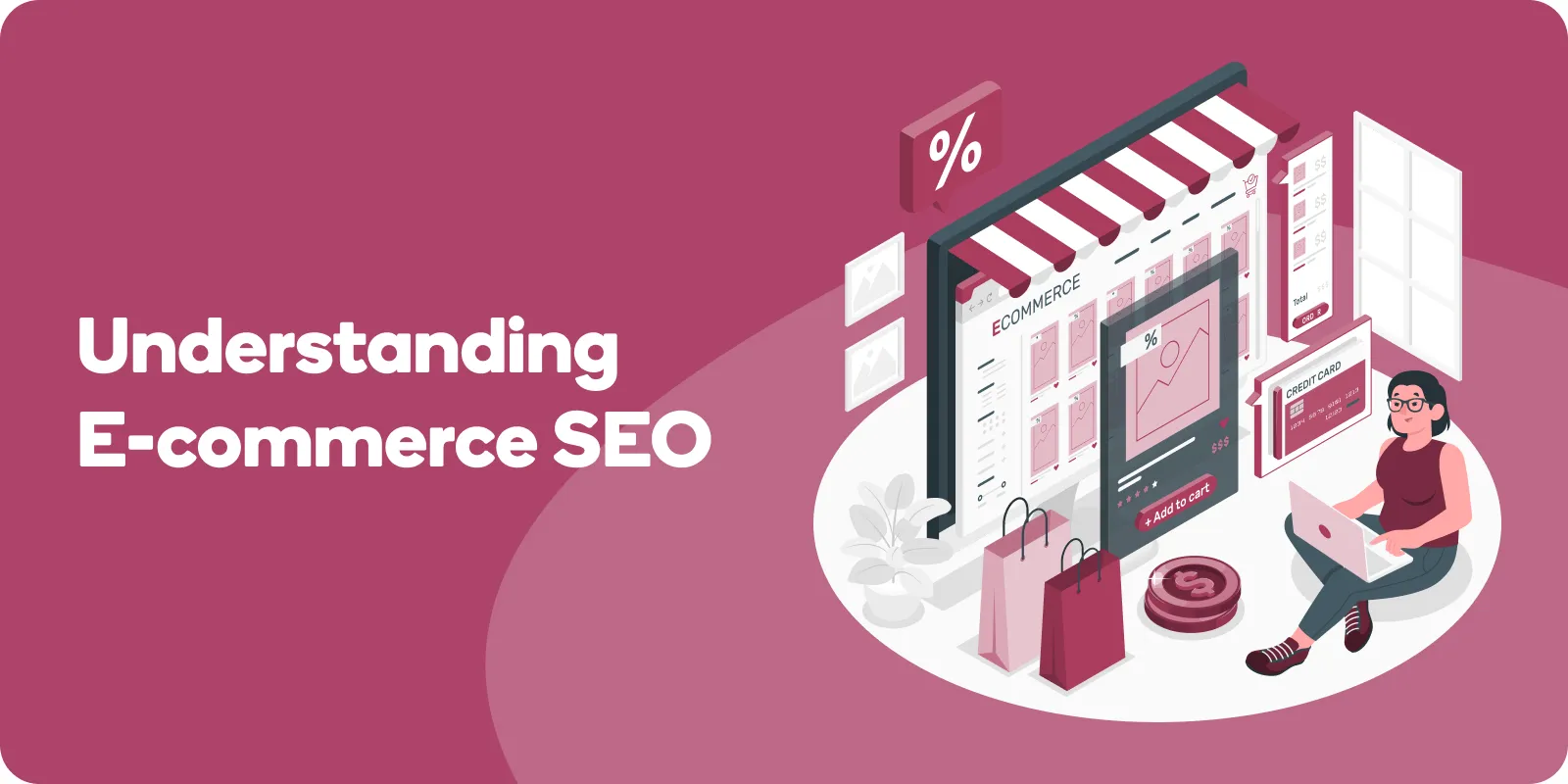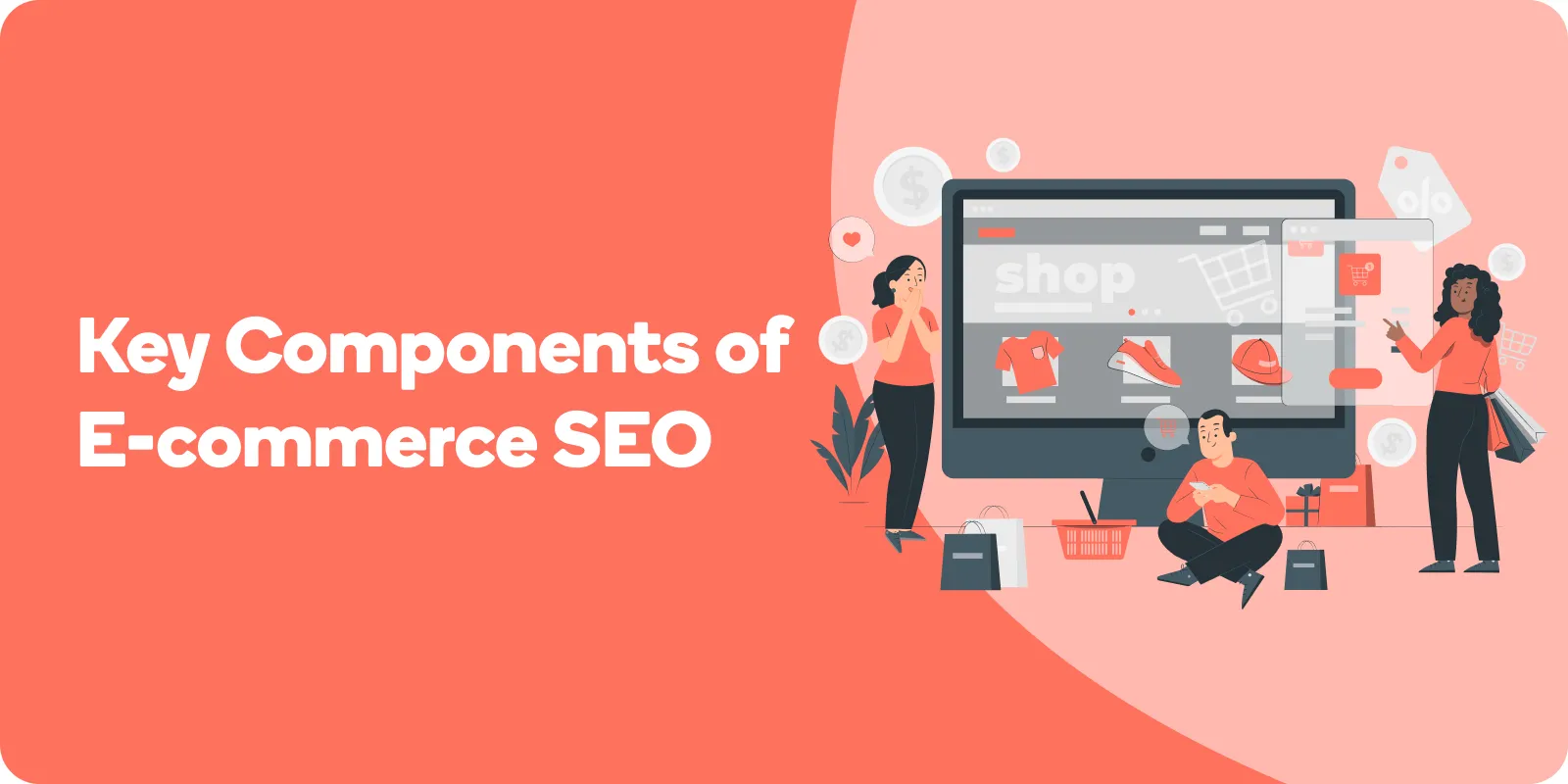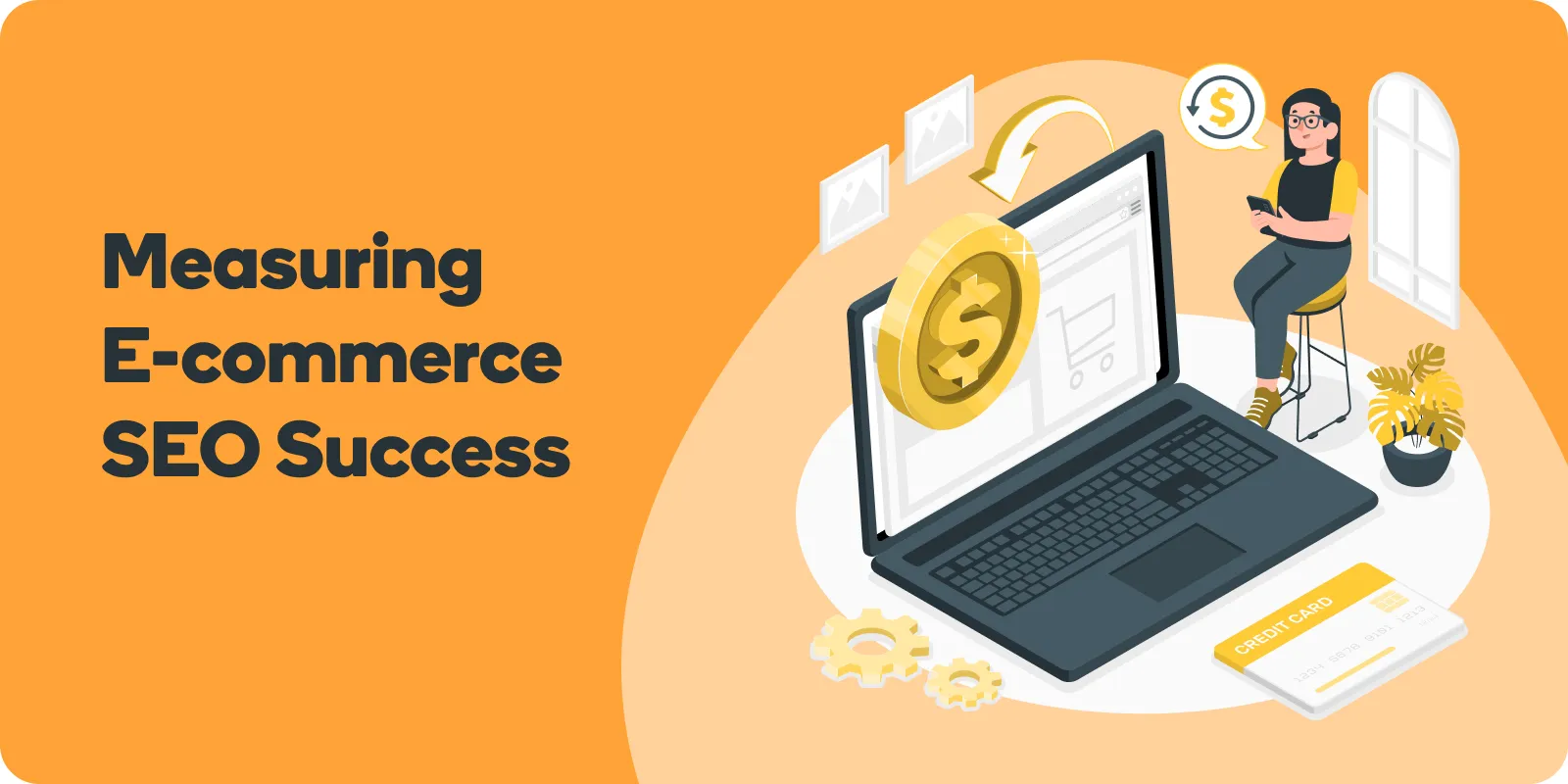Navigating SEO for e-commerce unique challenges and solutions presents opportunities in driving organic traffic, increasing sales, and enhancing user experience. Are you ready to embark on the journey to uncover the secrets of mastering e-commerce SEO? Let’s dive in!
Understanding E-commerce SEO
In the vast ocean of online businesses, search engines like Google act as lighthouses, guiding potential customers to your online store.
To ensure your e-commerce website stands out, it is crucial to implement a robust SEO strategy tailored to the unique demands of e-commerce. With millions of products vying for attention, e-commerce SEO is the key to unlocking a treasure trove of organic traffic and conversions.
One of the cornerstones of e-commerce SEO is keyword research, which helps you identify relevant search queries that potential customers use when looking for products like yours.
By optimizing your e-commerce site structure, product pages, and internal linking, you can create a seamless user experience that attracts both search engine algorithms and human visitors alike.
But why should you dedicate your precious time and resources to e-commerce SEO? The answer lies in the immense potential it holds in driving organic traffic, converting browsers into buyers, and ultimately, boosting your bottom line.
In contrast to paid ads, e-commerce SEO delivers a consistent stream of targeted traffic without draining your marketing budget.
Key Components of E-commerce SEO
The anatomy of a successful e-commerce SEO strategy comprises three main elements: on-page optimization, off-page optimization, and technical SEO.
On-page optimization focuses on enhancing your product pages, web pages, title tags, meta descriptions, and URLs. Crafting unique, engaging, and keyword-rich product descriptions and incorporating relevant keywords in your content and URLs are vital for on-page SEO success.
Off-page SEO, on the other hand, involves optimizing efforts outside of your website, such as link building. High-quality backlinks from authoritative websites signal to search engines that your e-commerce site is trustworthy and relevant, boosting your search engine rankings.
Additionally, don’t overlook the importance of reviews in your off-page SEO strategy, as they provide social proof and help shoppers make informed decisions.
Technical SEO might seem like a daunting task, but it is essential for ensuring that search engines can efficiently crawl, index, and rank your e-commerce website.
Ensuring a well-structured sitemap, optimized site architecture, and fast page load speeds are just some of the aspects that contribute to a solid technical SEO foundation for your e-commerce store.
Importance of User Experience
A truly successful e-commerce SEO strategy goes beyond just appeasing search engine algorithms; it also revolves around delivering a seamless user experience.
After all, what good is attracting organic traffic if your website fails to engage and convert visitors? User experience plays a pivotal role in e-commerce SEO success, influencing factors such as dwell time, bounce rate, and ultimately, conversions.
Site architecture and navigation are critical components of user experience. By designing a clear and intuitive navigational structure, you can guide your visitors effortlessly through your e-commerce website, helping them find what they are looking for in a jiffy.
Implementing breadcrumbs, for instance, can enhance user experience by providing them with an easy way to retrace their steps.
Moreover, optimizing your e-commerce website for mobile devices is no longer a luxury, but a necessity. With a significant portion of online shoppers using their smartphones to make purchases, a mobile-optimized website can make or break your e-commerce SEO success.
Mobile-friendly design, fast-loading pages, and easy-to-tap buttons are just a few elements that contribute to a stellar mobile user experience.
Unique Challenges in E-commerce SEO
E-commerce SEO is not without its fair share of challenges. From writing captivating product descriptions to avoiding low-quality content, optimizing loading and page speed up, tackling duplicate content, and ensuring positive user engagement – the road to e-commerce SEO success can be a bumpy one.
Additionally, internal challenges such as lack of collaboration between teams and inadequate internal linking can pose significant roadblocks.
But fear not, brave e-commerce explorer! For every challenge, there lies a treasure trove of solutions waiting to be uncovered.
By understanding the unique obstacles faced by e-commerce websites and implementing practical solutions, you can sail towards unparalleled e-commerce SEO success.
So, what are these unique challenges, and how can you overcome them? Join us as we embark on an adventure to discover the solutions to the most pressing e-commerce SEO issues.
Duplicate Content Issues
Duplicate content is a menacing sea monster lurking in the depths of e-commerce SEO. It occurs when the same content appears on multiple pages of your website or across different websites. This confuses search engines, leading to decreased visibility and lower rankings in search engine results pages (SERPs).
E-commerce websites are particularly vulnerable to duplicate content issues, as product pages often contain similar or identical descriptions.
Furthermore, some products may belong to category pages or to multiple categories, creating multiple versions of the same page.
Fear not! There are effective solutions to tame the beast of duplicate content. By using canonical tags, crafting unique product descriptions, and minimizing duplication in other areas of your website, you can ensure that your e-commerce website remains afloat in the turbulent waters of SEO.
Site Architecture and Navigation
The complexity of e-commerce websites can pose unique challenges when it comes to site architecture and navigation. With thousands, or even millions, of product pages, designing a user-friendly and search engine-friendly site architecture is no easy feat.
A well-thought-out site architecture not only enhances user experience, but also makes it easier for search engines to crawl and index your website.
However, certain navigation features, such as faceted navigation, can generate multiple versions of the same page, potentially causing duplicate content issues.
To overcome these challenges, it is essential to create a clear and logical site architecture with specific product categories in the main navigation.

Award-Winning
Sales Funnel & Website Expert
Ready for Revenue – Not Just “Traffic”?
- Websites that Work: Clean, fast, built to convert – no design fluff.
- Funnels that Sell for You: Step-by-step paths that turn clicks into paying customers.
- SEO That Hunts Buyers: Show up exactly when prospects reach for their wallets.
Additionally, implementing breadcrumbs and ensuring that navigation labels are clear and concise across all pages can further improve user experience and SEO performance.
Product Page Optimization
With countless product pages competing for attention in the vast ocean of e-commerce, optimizing each page for search engines while maintaining user-friendliness can be a herculean task.
The key to success lies in striking the perfect balance between SEO optimization and user engagement.
Incorporating long-tail keywords, creating relevant product titles, optimizing multimedia, and crafting unique, high-quality content are some of the techniques that can help you optimize your ecommerce sites and product pages for both search engines and users.
Additionally, optimizing URLs and using structured data can further enhance your e-commerce SEO efforts.
By optimizing each product page with a keen eye for both SEO and user experience, you can ensure that your e-commerce website stands out in the crowded marketplace and sails towards success.
Solutions to E-commerce SEO Challenges
Now that we have identified the unique challenges faced by e-commerce websites, it’s time to embark on a treasure hunt for solutions.
The key to overcoming these obstacles lies in a combination of practical strategies and innovative techniques. By optimizing your website for mobile, using raw logs instead of crawl reports, writing compelling product descriptions, improving loading speed, using SSL, creating product-focused content, and offering discounts and improved quality products, you can make great strides in overcoming e-commerce SEO challenges.
Join me as we delve deeper into the solutions to the most pressing e-commerce SEO challenges and unlock the secrets to e-commerce SEO success.
Tackling Duplicate Content
As we chart our course towards conquering duplicate content issues, let’s explore the strategies and tools at our disposal. First and foremost, it is essential to identify the sources of duplicate content on your e-commerce website. Once you have pinpointed the problem areas, you can take appropriate action to resolve these issues.
Canonical tags offer a powerful solution to duplicate content woes by telling search engines which version of a page should be considered the original. Additionally, crafting unique product descriptions and minimizing duplication in other areas of your website can help ensure that your e-commerce website remains afloat in the turbulent waters of SEO.
By employing these strategies, you can successfully navigate the treacherous waters of duplicate content and steer your e-commerce website towards unparalleled SEO success.
Improving Site Architecture
A well-designed site architecture is the backbone of a successful e-commerce website. By creating a clear and intuitive navigational structure, you can guide your visitors effortlessly through your e-commerce website, helping them find what they are looking for in a jiffy.
To enhance your site architecture, start by organizing internal links to your product categories in a logical and user-friendly manner.
Using breadcrumbs can further improve user experience by providing visitors with an easy way to retrace their steps. Additionally, ensuring that navigation labels are clear and concise across all pages can help users and search engines understand the structure of your website more easily.
By investing time and effort in improving your site architecture, you can create a seamless user experience that not only attracts visitors but also boosts your e-commerce SEO performance.
Optimizing Product Pages
The treasure trove of e-commerce SEO success lies in optimizing your product pages for both search engines and users.
By incorporating relevant keywords, creating compelling product titles, optimizing multimedia, and crafting unique, high-quality content, you can ensure that your product pages shine like gems in the vast ocean of e-commerce.
Additionally, optimizing URLs and using structured data can provide search engines with the necessary context and information about your products, potentially leading to enhanced organic search results and listings.
Implementing schema markup can help elevate your search results and showcase product ratings, pricing, availability, reviews, and more.
By optimizing each product page with a keen eye for both SEO and user experience, you can ensure that your e-commerce website stands out in the crowded marketplace and sails towards success.
Advanced E-commerce SEO Techniques
As we continue our voyage through the world of e-commerce SEO, it’s time to delve into the realm of advanced techniques. These techniques can help you further improve your e-commerce SEO performance, ensuring that your website remains a beacon of success in the competitive online landscape.
From schema markup implementation and mobile optimization to link-building strategies tailored for e-commerce websites, these advanced techniques can propel your e-commerce SEO efforts to new heights.
So buckle up and get ready to explore the uncharted territories of advanced e-commerce SEO techniques!
Schema Markup Implementation
Implementing schema markup on your e-commerce website can provide search engines with extra context and information about your products, potentially leading to enhanced search listings.
With rich snippets, you can elevate your search results and showcase product ratings meta description, pricing, availability, reviews, and more.
There are several schema types available for e-commerce products, including Product, Offer, Review, and Aggregate Rating.
By utilizing these schema types, you can provide search engines with the necessary details about your products, allowing them to display this information in an engaging and informative manner.
By incorporating schema markup on your e-commerce website, you can not only improve your SEO performance, but also provide users with a richer and more informative search experience.
Mobile Optimization
With the ever-growing number of online shoppers using their smartphones to make purchases, mobile optimization has become a critical component of e-commerce SEO success.
A mobile-optimized website can make or break your e-commerce SEO efforts, as it directly impacts user experience and search engine rankings.
To enhance your mobile user experience, ensure that your website design is responsive and adapts seamlessly to different screen sizes. Additionally, prioritize fast-loading pages and easy-to-tap buttons to make the browsing and purchasing process as smooth as possible for mobile users.
By optimizing your e-commerce website for mobile devices, you can tap into the vast potential of mobile shoppers and set your e-commerce business on the path to success.
Link Building Strategies
Link building is a powerful weapon in your e-commerce SEO arsenal. High-quality backlinks from authoritative websites signal to search engines that your e-commerce site is trustworthy and relevant, boosting your search engine rankings.
To build links for your e-commerce website, consider strategies such as creating linkable assets, pursuing guest blog post and posting opportunities, tracking down unlinked mentions, and getting listed on “where to buy” pages.
Additionally, you can leverage blogger outreach and influencer collaborations to gain high-quality backlinks and increase your website’s visibility and authority.
By employing effective link-building strategies specifically tailored for e-commerce websites, you can strengthen your e-commerce SEO performance and sail towards unparalleled success.
Measuring E-commerce SEO Success
In the ever-changing landscape of e-commerce SEO, it is crucial to measure the success of your efforts and make data-driven decisions. By consistently monitoring and analyzing key metrics, you can stay ahead of the game and make smart data-driven decisions to maximize your website’s performance.
Tracking the percentage of website visitors who complete desired actions, analyzing conversion rates from different traffic sources, landing pages, and user segments, and optimizing underperforming pages are just a few of the ways to ensure e-commerce SEO success.
With the right tools and strategies in place, you can navigate the stormy seas of e-commerce SEO and steer your online business towards a brighter future.
Key Performance Indicators (KPIs)
Keeping track of the key performance indicators (KPIs) for e-commerce SEO is essential for assessing the effectiveness of your efforts and making informed decisions.
Some of the most important KPIs include conversion rate, organic traffic, bounce rate, keyword rankings, page load speed, and revenue generated from organic search.
Conversion rate measures the percentage of visitors to your website who complete a desired action, such as making a purchase or signing up for a newsletter.
Organic traffic, on the other hand, provides valuable insights into your website’s performance in attracting visitors from search engine results pages (SERPs).
By monitoring these crucial KPIs, you can gain valuable insights into the success of your e-commerce SEO efforts and make data-driven decisions to enhance your website’s performance.
Analyzing and Adapting
As the saying goes, “change is the only constant,” and this is especially true in the dynamic world of e-commerce SEO.
Regularly analyzing and adapting your SEO strategies based on performance data is crucial for staying ahead of the competition and ensuring the continued success of your online business.
By monitoring key performance indicators (KPIs) and making data-driven decisions, you can fine-tune your e-commerce SEO strategy and optimize your website for both search engines and users.
Whether it’s refining keyword targeting, improving site navigation, enhancing the overall user experience, or experimenting with new techniques, staying nimble and adaptable is key to e-commerce SEO triumph.
By embracing the power of analysis and adaptation, you can navigate the ever-changing landscape of e-commerce SEO and steer your online business towards a brighter future.
Frequently Asked Questions
What is SEO in e-commerce?
SEO, or Search Engine Optimization, in the context of e-commerce, refers to the process of enhancing your online store in ways that can help it rank higher in search engine results pages (SERPs).
This involves implementing a series of strategies to improve organic or unpaid visibility, thereby increasing the likelihood of attracting prospective customers to your e-commerce website.
The practice of SEO encompasses various elements such as keyword research, on-page optimization (including meta tags, header tags, and product descriptions), technical SEO (like site speed optimization, mobile-friendliness, and structured data), content marketing, and link building.
A successful e-commerce SEO strategy can lead to improved website traffic, higher visibility for your products, and ultimately, increased sales and return on investment (ROI).
How to do SEO for my e-commerce?
Implementing SEO for your e-commerce involves several steps. First, you need to conduct thorough keyword research to understand what terms your potential customers are using to find products similar to yours. Tools like Google Keyword Planner or SEMrush can assist in this process.
Next, you should focus on on-page SEO. This involves optimizing your product pages with relevant keywords, writing compelling meta descriptions, and ensuring that your headers and title tags are accurate and keyword-rich. Also, it’s important to optimize your images by providing descriptive alt tags.
Technical SEO is another crucial aspect. This includes improving site speed, ensuring your website is mobile-friendly, implementing a secure HTTPS protocol, and creating a clean, crawlable site structure. Additionally, using structured data or schema markup can help search engines understand your site content better, enhancing your visibility in SERPs.
Content marketing is a valuable component of SEO. You can create a blog related to your products, offering useful information that can engage your audience, promote your products, and position your site as an authority in your niche.
Finally, building high-quality backlinks from reputable sites can boost your site’s authority and improve its ranking in search engine results. Remember, SEO is a long-term strategy, and results may take time to appear.
Does e-commerce need SEO?
Absolutely! E-commerce businesses can greatly benefit from SEO. Considering that a substantial portion of online traffic is driven by search engines, ignoring SEO can mean missing out on potential customers. SEO helps your online store rank higher in search engine results, increasing your visibility to potential customers.
Furthermore, SEO is cost-effective compared to other forms of digital marketing like pay-per-click advertising. By ranking higher organically, you can attract free traffic to your website.
Additionally, people who find your website through organic search are often more qualified and more likely to convert into customers, as they are actively searching for the products or services you offer.
Is SEO needed for Shopify?
Yes, SEO is necessary for Shopify, just like it is for any other e-commerce platform. Despite Shopify having a range of SEO-friendly features, like easy editing of title tags, meta descriptions, and URLs, store owners should still actively implement SEO strategies to ensure their store ranks well in search engine results.
For instance, Shopify store owners should conduct keyword research to identify relevant terms, optimize product descriptions with these keywords, and use them in alt tags for images.
Additionally, creating high-quality content like blogs, improving site speed, making the website mobile-friendly, and acquiring backlinks can all enhance a Shopify store’s SEO performance.
What is the best tools for ecommerce SEO?
Here are the top 10 SEO tools for eCommerce:
- Ahrefs: An all-in-one tool that helps with keyword research, competitor analysis, link building, and more.
- KWFinder: A tool for finding trending keywords with a simple and efficient interface.
- Google Search Console: Useful for measuring website search traffic and obtaining performance reports.
- Google Analytics: Provides real-time data about website users and their interactions.
- SEMRush: An optimization tool for eCommerce stores that also provides keyword research capabilities.
- Moz Pro: Offers a wide range of research tools and resources for tracking SEO performance.
- Ubersuggest: A free tool by Neil Patel that provides keyword ideas, SERP overviews, and site audits.
- Helium10: Ideal for identifying selling opportunities on Amazon and managing your business.
- Raven SEO Tools: A comprehensive suite of SEO tools for in-depth SEO and SEM competitor research.
- Google PageSpeed Insights: Helpful for identifying website issues and areas of improvement, particularly in terms of loading speed.
Conclusion
In the treacherous waters of e-commerce SEO, it is essential to chart a course that leads to success. By understanding the unique challenges and opportunities in e-commerce SEO, implementing practical solutions, and leveraging advanced techniques, you can unleash the full potential of your online business.
As you embark on this exciting journey, remember that the key to success lies in constant analysis, adaptation, and a relentless pursuit of excellence. So, hoist the sails, and set forth towards unparalleled e-commerce SEO success!











